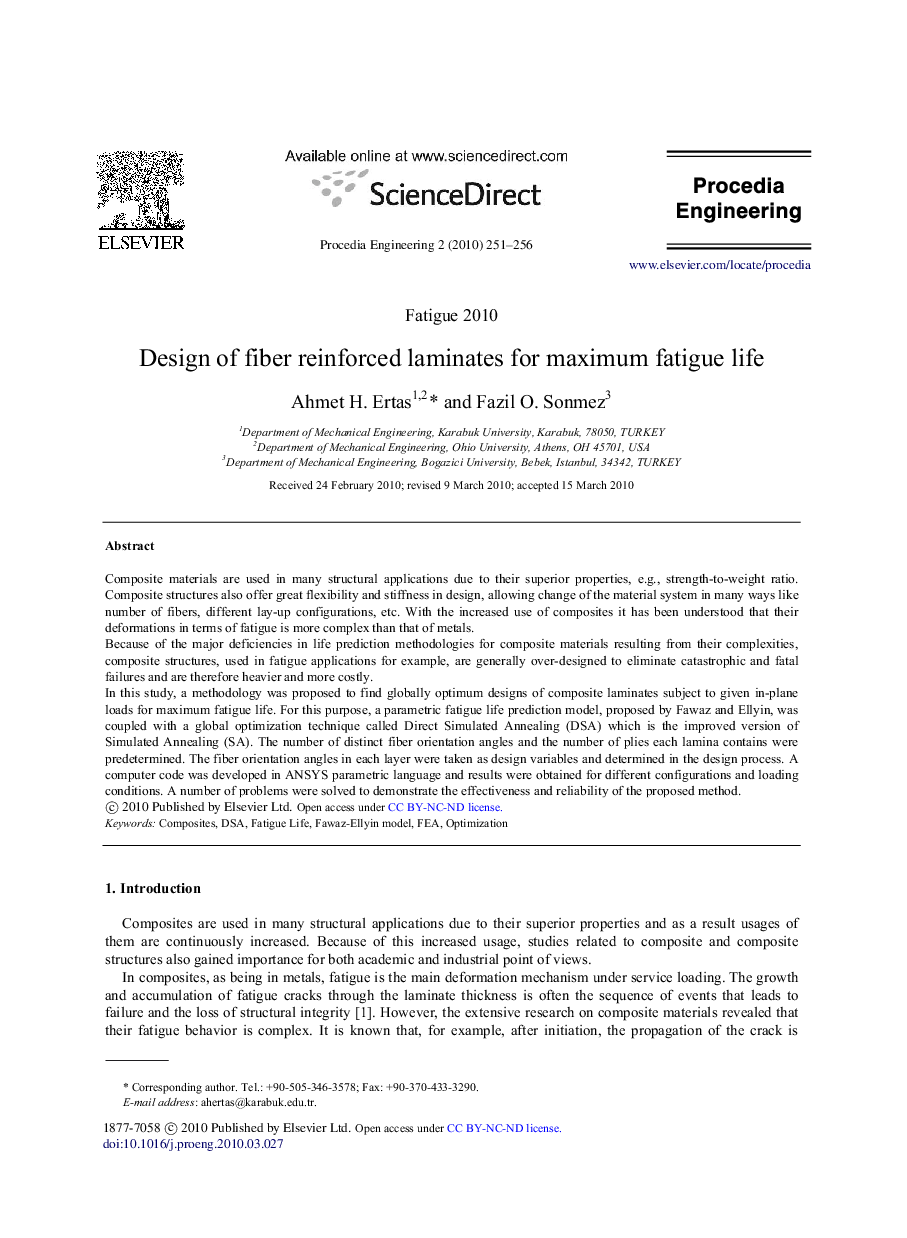| کد مقاله | کد نشریه | سال انتشار | مقاله انگلیسی | نسخه تمام متن |
|---|---|---|---|---|
| 864614 | 909628 | 2010 | 6 صفحه PDF | دانلود رایگان |

Composite materials are used in many structural applications due to their superior properties, e.g., strength-to-weight ratio. Composite structures also offer great flexibility and stiffness in design, allowing change of the material system in many ways like number of fibers, different lay-up configurations, etc. With the increased use of composites it has been understood that their deformations in terms of fatigue is more complex than that of metals. Because of the major deficiencies in life prediction methodologies for composite materials resulting from their complexities, composite structures, used in fatigue applications for example, are generally over-designed to eliminate catastrophic and fatal failures and are therefore heavier and more costly. In this study, a methodology was proposed to find globally optimum designs of composite laminates subject to given in-plane loads for maximum fatigue life. For this purpose, a parametric fatigue life prediction model, proposed by Fawaz and Ellyin, was coupled with a global optimization technique called Direct Simulated Annealing (DSA) which is the improved version of Simulated Annealing (SA). The number of distinct fiber orientation angles and the number of plies each lamina contains were predetermined. The fiber orientation angles in each layer were taken as design variables and determined in the design process. A computer code was developed in ANSYS parametric language and results were obtained for different configurations and loading conditions. A number of problems were solved to demonstrate the effectiveness and reliability of the proposed method.
Journal: Procedia Engineering - Volume 2, Issue 1, April 2010, Pages 251-256